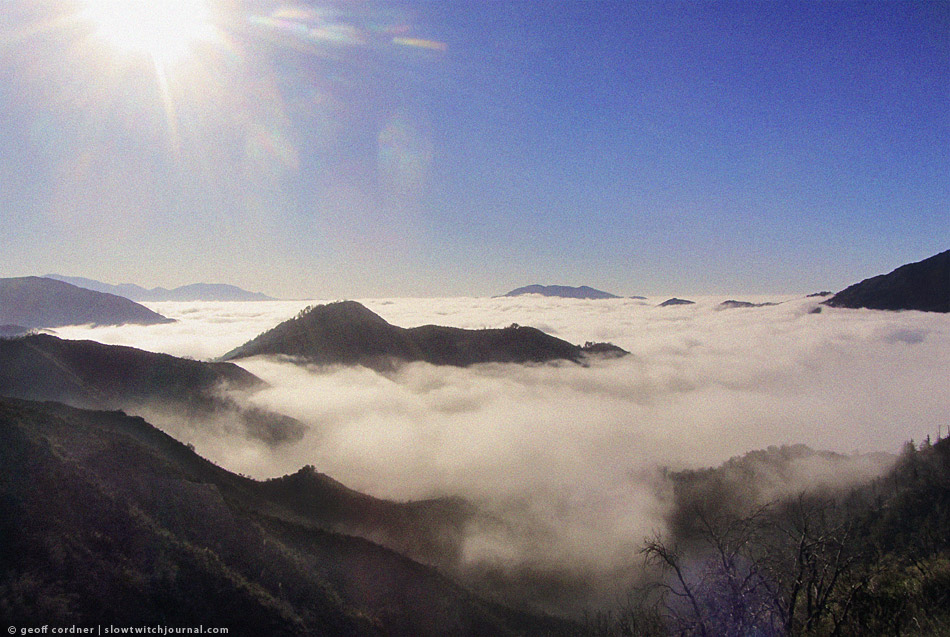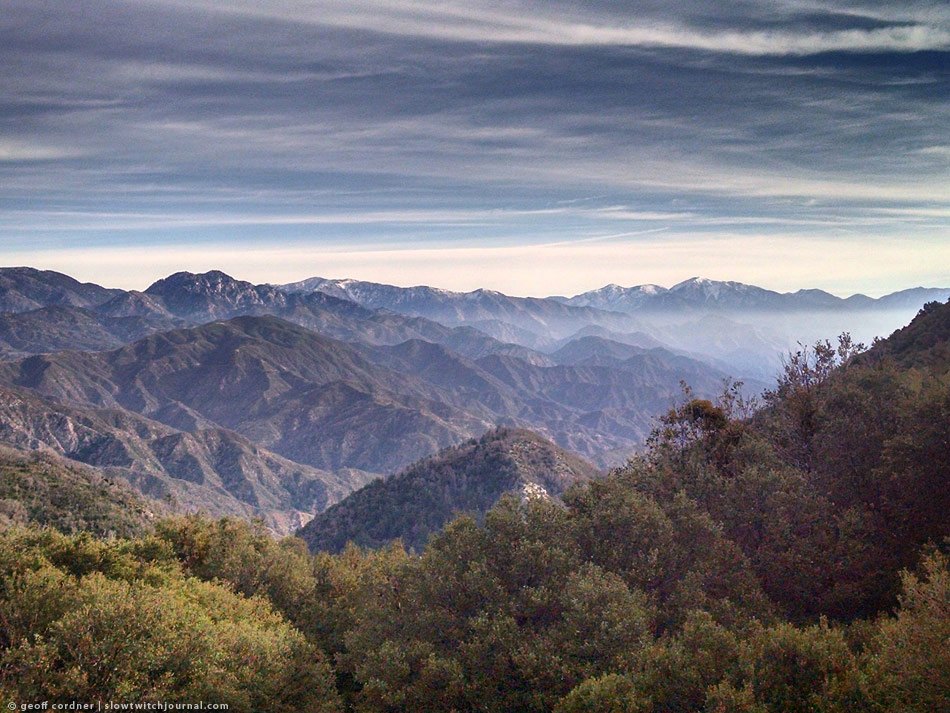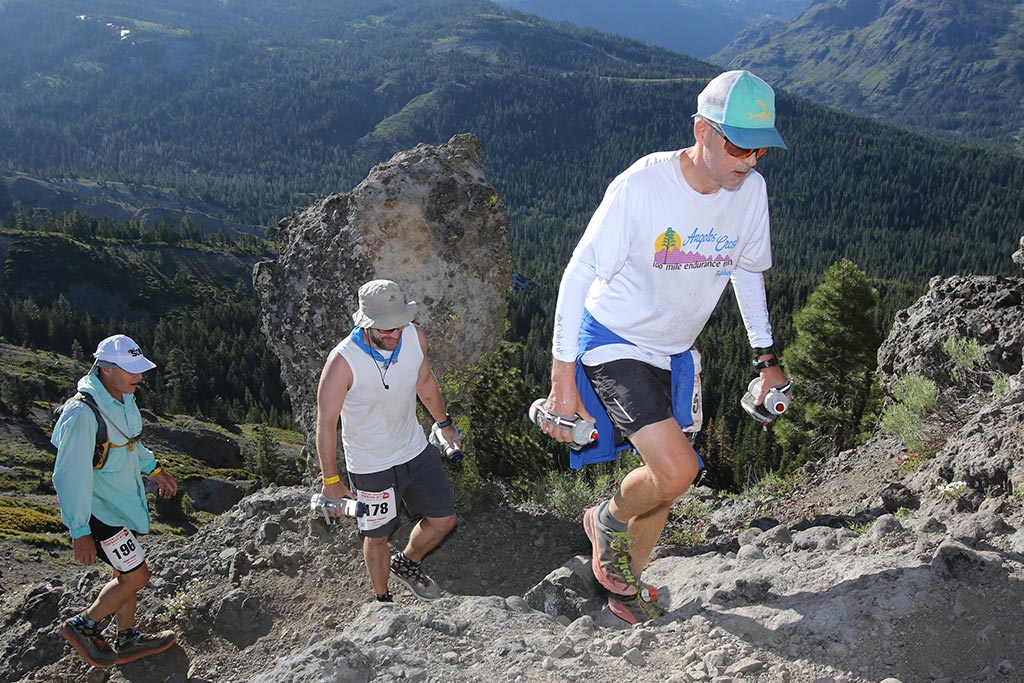Rattlesnakes, Wild Parrots, and Meditation on Sound
“We are immersed in a soundscape of enormous depth and variety. Just take a moment to listen. What do you hear?” [1]
It’s 6:31 am. My kitchen window faces east. Highland Park isn’t awake yet. There are some gloriously brooding storm clouds on the nearby horizon. I’m a few blocks from the Gold Line Metro Station, and I can see a train passing slowly through.
I can also hear it. The train makes a variety of distinct sounds, and, of course, they come and go, from my perspective, as the train does. There is an arising, in which the sound first becomes noticeable, and then it changes, and grows louder, or expands, and then it contracts, or fades and finally it is gone. There are birds above. They form almost a top layer of sound, and there’s a real variety in that layer. There are sounds of slightly distant traffic, because the busiest street – Figueroa – is about 4 blocks away. Monte Vista is a slightly busy street about a block away, so there is a second layer of traffic, not as steady, but much louder and audibly closer when something passes, as a bus just did. It’s a flat street, so there are no grinding gears. Cars generally woosh, and buses make that odd braking noise that sounds like they are releasing a bunch of air. There is a hill the next block over, so there will be some slightly distant gear grinding when the day gets a little later. My street won’t wake up for another hour or so. There is the sound of my cat eating, to my right. Behind me is the hum of the refrigerator. The sounds all occupy, and signify, distinct physical spaces.
And now, of course, a siren, because this is the East Side. And a second siren, the first for a police car and the second for an ambulance or fire truck. The bells from the train, and then the train blowing its horn as it approaches the station. Grinding of gears on the hill two blocks away and the addition of another bird to the top layer; things are building to a crescendo.
There is a musicality to the sound, provided the music you listen to is classical rather than pop. It doesn’t adhere to a verse-chorus-verse-chorus-bridge-verse-chorus structure. In the 10th edition of The Oxford Companion to Music, Percy Schoales defines musical form as “a series of strategies designed to find a successful mean between the opposite extremes of unrelieved repetition and unrelieved alteration.”
Music theory talks about layers of form in which foreground details occur against a more structural, steady background. This is considered to be more true for classical music than for popular music. It’s also true for the sounds outside. In the foregrounded layer are the sirens, the grinding gears, the train, and the new bird that has just arrived and is making its presence known to the others, who are chattering loudly back.
There’s a great benefit to mindfully listening, and sorting out all the strands and tendrils of sound. What sounded like a cacophonous wall of sound, oppressive to experience, now becomes sophisticated, nuanced, often delicate and sometimes beautiful. It becomes symphonic.
![]()
I watch the ground below and directly in front of me when I run. If not, (and even so), I end up taking some bloodying spills. I try to be visually aware of everything.
I don’t necessarily look at the ground when I stop.
Three autumns ago I was running down Kenyon Devore trail from Mt. Wilson to the Gabrielino Trail and into Westfork. It was late October, and the trails were empty of people.
I stopped at a stream crossing and was looking around. I heard a sound and wondered to myself “who is playing the maracas?” I looked upstream, and saw nothing. I stepped across the stream, looked back, and realized I’d been standing right next to a rattlesnake.
My complete disconnection to sound could have cost me. Luckily, rattlesnakes seldom strike unless threatened, and despite standing right next to it, it apparently understood I wasn’t threatening it. I was just ignorant.
![]()
Every Wednesday, I do a group meditation. Tonight’s meditation was on external sound.
It is striking how different every place sounds from the next. That’s such an obvious statement it scarcely seems to merit mention, but here’s the thing: even though this is intellectually obvious, how many of us actually experience it? Think about the last three places you were today. You might be able to imagine how they sounded different from one another, but do you actually know? Did you consciously experience the sounds? Are you aware of what each place sounded like, today?
My old apartment up in the hills had mostly distant sounds – cars from the 2 freeway far below, the occasional dog barking, but also nearby sounds: the sound of my landlady’s dog Taffy scampering across the floor upstairs. My last house at the bottom of Mt. Washington had a number of incessantly barking dogs down the street. There was also the sound of neighbors’ voices. My place now I hear some traffic, and also the sounds of the Gold Line Metro 2 blocks away. I also hear wild parrots.
My Wednesday meditation group meets at a house on top of a steep hill in Echo Park. The street usually gets a lot of traffic, especially when the Dodgers are playing, and the cars really labor as they make the climb. There is also a police helicopter landing pad below, on Sunset Blvd below.
If you had asked me what it sounded like, I’d’ve mentioned the cars and the helicopters, but today I listened instead of imagined, and it was oddly quiet. There were no helicopters until the meditation ended, and I don’t think more than 2 cars came up the hill.
Quiet is something we don’t notice. Generally, we notice something’s presence, not its absence. We notice noise, not quiet. We notice agitation, not calm.
![]()
I’ve had several meditation teachers over the years. Shinzen Young seems to be the teacher of all of them. He is a Vipassana teacher, which basically means he teaches mindfulness, but he comes at it from a perspective more rooted in Zen than in Theravada, which is what Vipassana is traditionally a technique of.
Shinzen has developed a number of ever changing technique that seem to borrow a lot from concepts of mathematics and science, which has appeal to those who want to meditate without the “religious” context of Buddhism. I’m not one of those people – I appreciate the Buddhist context – but the mathematics metaphors appeal to my informally-testing-well-on-the-aspergers-side-of-things self. I really like numbers, and, more than that, the patterns that numbers form.
A lot of mindfulness seems, to me, to be about detecting patterns. There are patterns in everything – in sound, in thought, in visuals… Everything, it turns out, is connected. Nothing exists in isolation. The connections are not always obvious, however, and often the patterns they form are surprising. Things are seldom what we thing they should be, or where we think they should be, or doing what we think they should be doing. This is the glory of life.
The version of Shinzen Young’s techniques that I learned contains a meditation on Objective Space, called Focus Out, which is great for cultivating an awareness of immediate reality.
It’s extraordinarily simple (although it takes some practice). As you sit, bring your attention to the sounds around you. As you become aware of a sound, note it, and label it “Sound”. Don’t identify it (don’t label it “car horn” or “barking dog”), don’t judge it, don’t think about it, just acknowledge that it’s there, and listen to it.
If the sound provokes thought, or emotions, or mental imagery, that’s cool, just let that stuff occur in the background of your attention. If you find yourself pulled away into emotions, images, mental talk, or anything else, gently return to sound as soon as you realize that this has happened.
And that is all there is to it.
![]()
Bernie Krause was once a member of the Weavers with Pete Seeger. Later he became a pioneer of the Moog synthesizer, and played with the Doors, The Byrds, George Harrison, Stevie Wonder, the Monkees…and worked on the soundtracks for Apocalypse Now, Rosemary’s Baby, Performance, Invasion of the Body Snatchers, and a host of others.
A pioneer in incorporating natural soundscapes as integral components of orchestration, he eventually turned his back on popular music and since 1979 has concentrated almost exclusively on recording and archiving pristine sound environments from around the world.
He studies these natural sounds with an attention very similar to mindfulness. He has studied (and contributed heavily to the science of) soundscape ecology, which is the study of sound within a landscape and its effect on organisms. He divides sounds into three categories: biophony, which is sounds generated by organisms, geophony, which is sound generated by the physical environment, and anthrophony, which is sound generated by humans.
Of particular interest is in how sound changes over time. Almost always it seems that there is some assertion that human interference in a natural environment will have little or no consequence, an assertion that is disproven by the diminishing or vanishing of biophony.
Bernie Krause gives an NPR Ted Talk which can be listened to here, part of a series called Everything is Connected, which brings us back to a point I made earlier in this post, and a central tenet of Buddhism. Everything is connected is, essentially, the concept of non-self.












Leave a Reply
Want to join the discussion?Feel free to contribute!